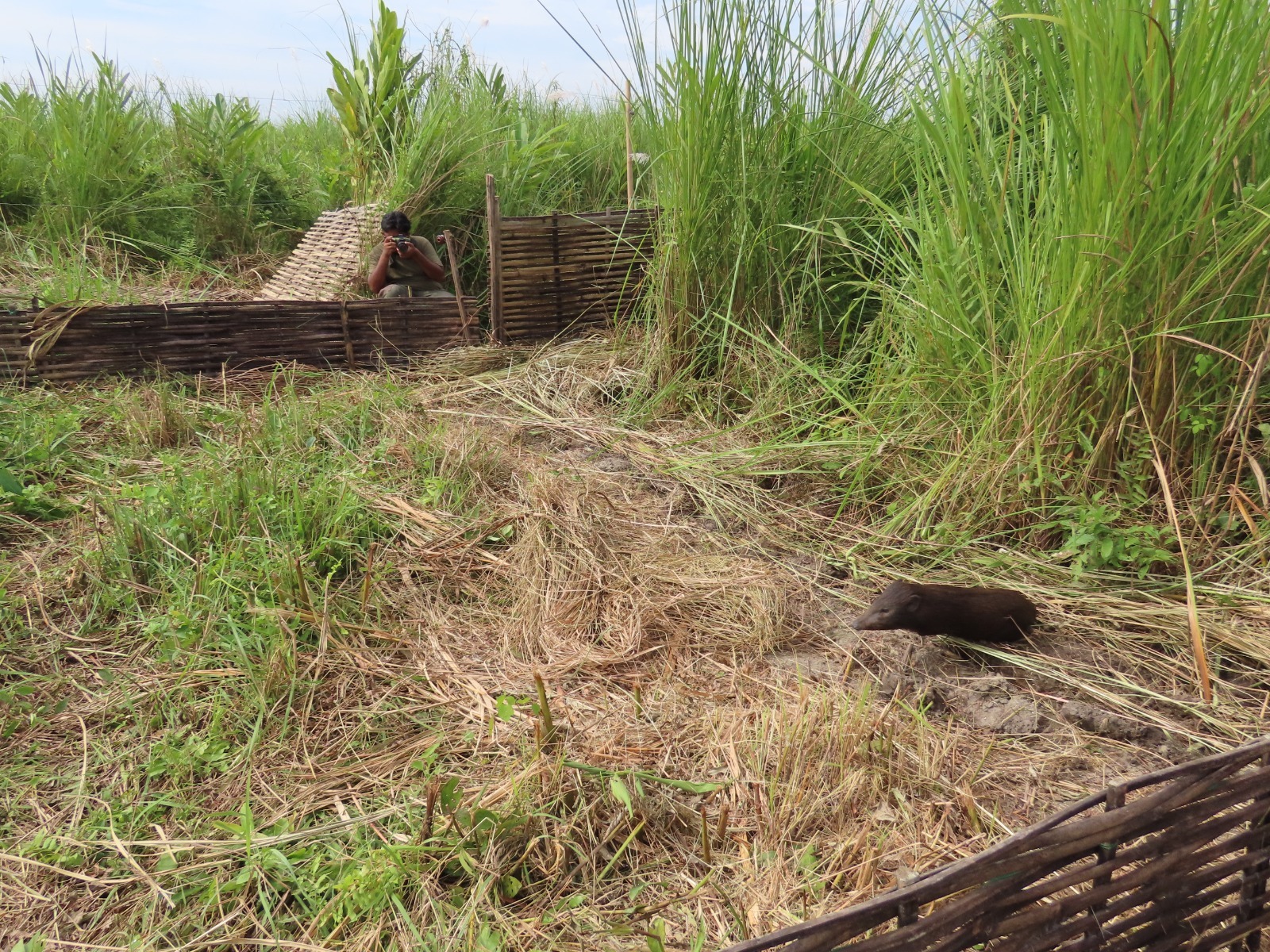Eighteen captive-bred pygmy hogs have been released in the sprawling Manas National Park of Assam, India, by the Pygmy Hog Conservation Programme (PHCP), today.
This is for the fourth time pygmy hogs have been reintroduced to Manas Park by the PHCP after successful releases in 2022, 2021 and 2020. This has now taken the total number of this Critically Endangered species released at this site up to 54, meaning the PHCP is well on its way to meet its target of 60 hogs released in Manas Park by 2025.
The programme, which is made up of founding partner Durrell Wildlife Conservation Trust, along with the IUCN/SSC Wild Pig Specialist Group, Assam Forest Department, Ministry of Environment and Forests, Government of India, and Ecosystems-India, with Aaranyak as delivery partner, has been working to bring this precious species back from the brink after it was previously thought to be extinct in the 1970s.
The PHCP has so far successfully bred and reintroduced 170 hogs in Assam, India, which, we are happy to say, for the first time since the reintroduction programme began, may now be outnumbered by their current global wild population.
The Pygmy Hog Conservation Programme
The Pygmy Hog Conservation Programme (PHCP) started its work in 1996, where two males and two females were captured from the Bansbari range of Manas National Park. The reintroduction of captive bred hogs to the wild began in 2008. Prior to releases in Manas National Park, the PHCP selected other appropriate grasslands in Assam for reintroductions of the pygmy hog. One site, Orang National Park, is located approximately 120km southeast of Manas, on the north riverside of the Brahmaputra River. The park is approximately 80km2 and supports grassland, woodland and ‘mosaic’ habitat types, as well as charismatic species such as the tiger, elephant and rhino.
Fifty-nine pygmy hogs were released in Orang between 2011 and 2015. The reintroductions in Orang have been particularly successful as the population is now estimated to be 130 hogs. This is made even more exciting as the lifespan of a pygmy hog in the wild is around 7 years, so this population is likely to be made up of entirely wild born hogs.
Pygmy hogs are extremely shy and secretive in the wild, remain hidden in tall dense grass and rarely emerge in the open, which has made monitoring them at the reintroduction site in Orang National Park a challenge.
The PHCP team of conservationists have worked through this by employing camera traps and undertaking sign surveys, where the team look for pygmy hog pellets, nests, foraging marks, and footprints. The pygmy hogs have been seen up to 2km away from the nearest release site, showing a healthy dispersal and exploration of the site by reintroduced and wild-born individuals.
PHCP Project Director, Dr. Parag Jyoti Deka said: “The results of the Orang camera trap and sign surveys show the real impact that our captive breeding and release programmes can have towards saving species from extinction. With the inspirational dedication of the Durrell team, and with the support of our partners Aaranyak and Assam Forest Department in Assam, we have been able to restore a self-sustaining population of pygmy hogs, bringing back an integral part of the ecosystem of the grasslands of Orang National Park. This has been achieved alongside an effective science-based programme of habitat restoration, benefiting not only the pygmy hog, but also other grassland specialist species.”
As part of its rewilding strategy, the PHCP will continue to maintain a population of around 80 captive hogs at its two centers in Assam and breed more hogs for release. The strategy for monitoring hogs after their release continues to develop.
For this particular release the PHCP will be employing not only camera trap and sign surveys, but also carrying out a fourth year of radio-telemetry tracking on eight of the pygmy hogs, which will provide critical data about their behaviour after release and the habitat use of reintroduced hogs.
Manas Park contains some of the largest remaining grassland blocks in the sub-Himalayan grassland ecosystems. Manas Field Director, Rajen Choudhury, said, “I am happy to welcome the release of more pygmy hogs to their original home. It will boost the rewilding of Manas’ grasslands and also bring back its glory. Manas National Park management is investing more in scientific management of the grassland. We hope this management will help in securing the future of the reintroduced pygmy hog and they will establish their home here. It will also help all the grassland associated species in Manas National Park, like the Bengal florican, hispid hare, hog deer and rhino.”
In the last three years when both Coronavirus and African Swine Fever in Assam have presented major challenges for the PHCP, the successful release of 54 hogs into Manas National Park is a landmark achievement and is a key step on the road to the establishment of a new sub-population of pygmy hogs in their historical home.
Dr. Bibhab Kumar Talukdar, CEO of Aaranyak – a key partner of the programme, added that, “Aaranyak is happy to continue to be a delivery partner of the Pygmy Hog Conservation Programme – an important species recovery programme. I am happy to learn that from the reintroduction of the pygmy hog in the recent past, it has established a population in Orang National Park. This result will encourage the entire conservation community to dedicate more towards species recovery. The continued reintroduction effort of the pygmy hog in Manas National Park will help not only in population building but also investing more in securing their home.”

